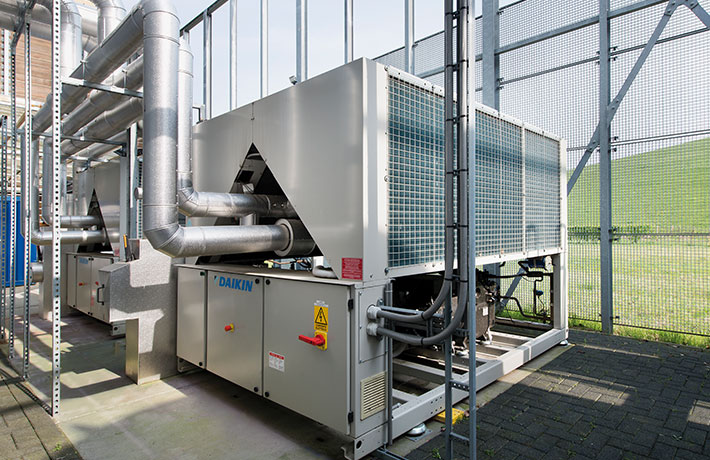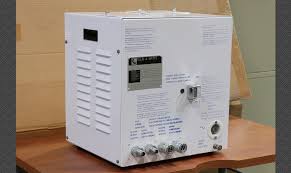Energy Recovery in Chillers
Introduction
Energy recovery in chillers represents a cutting-edge approach to optimizing cooling systems by capturing and reusing waste heat generated during the cooling process. Traditional chiller systems often discard heat as a byproduct, leading to inefficiencies and unnecessary energy waste. However, with energy recovery technologies, this excess heat can be harnessed and redirected to other useful applications, such as preheating water, space heating, or aiding in other industrial processes. This innovative approach not only reduces overall energy consumption but also enhances the environmental sustainability of cooling systems.
Waste Heat Recovery
- Basics: In traditional chillers, the heat absorbed during the cooling process is often released into the atmosphere, wasting valuable energy. With energy recovery systems, this waste heat is captured and repurposed, usually for heating water or air.
- Impact: This reduces the overall energy demand for heating systems, making the chiller system more efficient.
Heat Exchangers
- Function: Heat exchangers are a critical component in energy recovery chillers, allowing the transfer of thermal energy from the chiller’s refrigerant to another medium, such as water, without mixing the two.
- Benefit: They enable the chiller to perform both cooling and heating functions simultaneously, which can lead to significant energy savings in applications requiring both.
Improved Efficiency
- Energy Savings: By recycling waste heat, energy recovery chillers can reduce total energy consumption by up to 50%, especially in environments with a simultaneous demand for heating and cooling.
- Reduced Carbon Emissions: With lower energy consumption comes reduced carbon emissions, making energy recovery chillers a more environmentally friendly option.
Applications of Energy Recovery
- Commercial Buildings: Large buildings like hospitals, hotels, and office spaces benefit from energy recovery systems by using waste heat for heating water or spaces, reducing the load on boilers or other heating equipment.
- Industrial Facilities: Many industrial processes require both heating and cooling at different stages, making energy recovery chillers an ideal solution for maximizing operational efficiency.
Integration with Renewable Energy
- Compatibility: Energy recovery chillers can also be integrated with renewable energy systems like solar or geothermal energy, further improving sustainability and energy efficiency.
- Future Trends: With increasing demand for sustainable energy solutions, the combination of energy recovery systems and renewable energy sources is likely to see more widespread adoption.
Economic Benefits
- Cost Reduction: Although energy recovery chillers may have a higher initial cost, the reduction in energy consumption leads to lower utility bills over time, offering a strong return on investment.
- Increased Equipment Longevity: Energy recovery can reduce the wear and tear on other heating equipment by sharing the load, leading to longer equipment life and lower maintenance costs.
Regenerative Cooling
- Concept: In regenerative cooling systems, the waste heat produced during the chiller’s operation is reused within the same system to pre-cool incoming fluids. This process reduces the energy required for cooling, thereby boosting overall system efficiency.
- Benefit: This closed-loop approach minimizes heat waste and maximizes the effectiveness of the cooling process.
Heat Pump Technology Integration
- Working Principle: Modern energy recovery chillers can be integrated with heat pump technology, where the waste heat captured from cooling operations is used to heat spaces or water in buildings.
- Versatility: This dual-purpose functionality makes these chillers a key component in optimizing building energy systems, especially in climates with fluctuating heating and cooling needs.
Lower Operational Costs
- Financial Advantages: By reducing the reliance on separate heating systems (boilers, water heaters, etc.), energy recovery chillers can lead to significant savings on energy bills. The decreased energy demand also leads to a reduction in peak electricity charges, offering long-term financial benefits.
- Incentives and Rebates: Many governments and utilities offer rebates or incentives for installing energy-efficient HVAC systems, including chillers with energy recovery capabilities. These financial incentives further offset the upfront investment.
Extended Equipment Lifespan
- Reduced Load on Components: By using waste heat to assist in other building functions, energy recovery chillers lessen the operational load on both cooling and heating equipment. This shared load distribution reduces wear and tear on the system’s mechanical components, extending the lifespan of the equipment.
- Less Frequent Maintenance: With integrated energy recovery, chillers can operate more smoothly, requiring fewer maintenance checks and repairs, thus reducing downtime and increasing productivity.
Cooling Tower Integration
- Optimization of Cooling Towers: Energy recovery chillers can be paired with cooling towers to further enhance energy efficiency. Waste heat from the chiller can be used to optimize the operation of the cooling tower, minimizing water and energy usage while improving cooling performance.
- Water-Saving Benefit: By reducing the load on cooling towers, energy recovery systems also help conserve water, making the entire cooling process more sustainable.
Conclusion
Energy recovery in chillers is a transformative approach that redefines how cooling systems are optimized for both efficiency and sustainability. By repurposing waste heat that would otherwise be discarded, these systems provide an effective means of reducing energy consumption and operating costs. They also contribute to a greener footprint, helping industries and buildings meet growing demands for environmental responsibility. As energy prices rise and regulations on emissions tighten, the adoption of energy recovery technologies is poised to play a crucial role in achieving both operational efficiency and sustainability targets.






